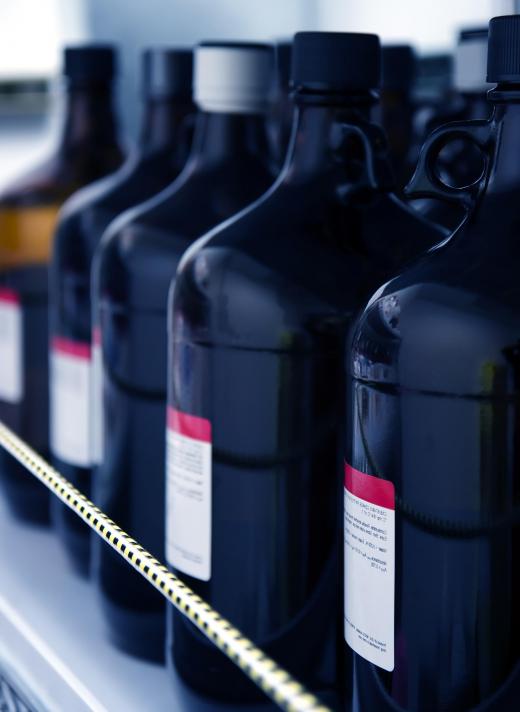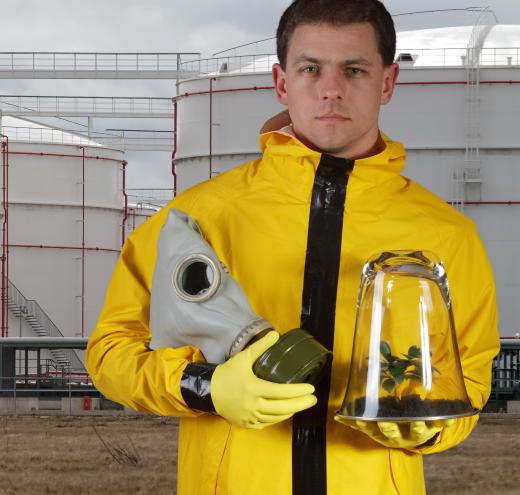What is Carbon Disulfide?
Carbon disulfide is a colorless or faintly yellow liquid at room temperature and has an odor resembling chloroform or ether. It is volatile and flammable, and is used as a solvent, an insecticide, a building-block in organic chemistry, and in the manufacture of viscose rayon, cellophane, and bamboo fiber. Carbon disulfide is released naturally into the atmosphere through various sources, including the metabolic processes of plants, the decaying of animal feces, from volcanoes, and also as a byproduct of oil and gas processing. Approximately 1 million tonnes (1 billion kg) of carbon disulfide are produced annually for use in industry.
The formula for carbon disulfide is CS2. It is spontaneously flammable at temperatures in the range of 130 to 140ºC (266 to 284ºF) and burns with a blue flame into carbon dioxide and sulphur dioxide. It dissolves waxes, resins, lacquer, and vulcanized rubber, but must be protected from sunlight and will decompose if left standing for a prolonged period. Carbon tetrachloride, a common solvent that was widely used in the production of chlorofluorocarbons (CFCs) before their use was discontinued for environmental reasons, can be produced by chlorinating carbon disulfide.

Despite is prevalence in the atmosphere, carbon disulphide is not considered a greenhouse gas, nor is it thought to be a threat to water supplies or soil composition. It is usually present in concentrations large enough to be hazardous only in industrial settings, where toxic amounts of the chemical may be inhaled or absorbed through the skin. The symptoms of acute carbon disulfide poisoning are respiratory failure and convulsions leading to coma and death. Less severe exposure can cause nausea and vomiting accompanied by headache, delirium, and hallucinations. Chronic exposure to low levels can produce arteriosclerosis, impaired vision, and symptoms similar to Parkinson's disease.

The carbon disulfide material safety data sheet (MSDS) describes the chemical as extremely hazardous in the case of skin or eye contact, ingestion, or inhalation. In the case of eye contact, it recommends flushing with cold water for 15 minutes, and for skin contact, washing with soap and water. Victims of CS2 inhalation and ingestion should be given mouth-to-mouth resuscitation and qualified medical attention as soon as possible.

Carbon disulfide should be stored in a closed container away from open sources of heat. Spills should be cleaned with dry earth. A small fire involving CS2 should be extinguished with dry chemical powder and a large one with alcohol foam, water spray, or fog.
AS FEATURED ON:
AS FEATURED ON:














Discuss this Article
Post your comments